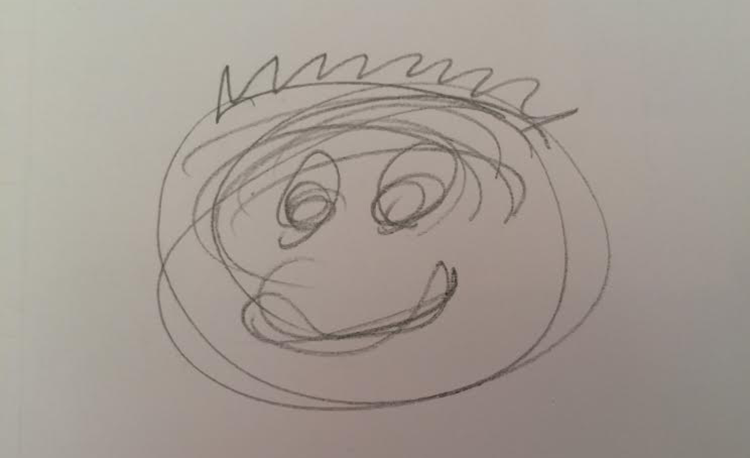National doodle Day is on February 5, an annual fundraising event organized by Epilepsy Action where friends, family and famous faces come together to draw a line through epilepsy. Naturally, we thought it would be important to talk about the science behind doodling and how it can actually help with stress.
doodling meaning?
Doodling is basically “a habit of unfocused or unconscious drawing while the person’s attention is actually occupied by something else”. Although doodling meaning psychology usually seems like senseless drawings, they have meanings behind them.
Benefits of Doodling
Doodling is usually frowned upon because it assumes that the person isn’t paying attention. However, studies show that doodling is not counterproductive and actually has many benefits such as:
Increases Creativity
The reason behind this is that doodling uses three additional learning modalities in our brains.
Visual: we are seeing what we are drawing.
Kinesthetic: we are using our hands to draw.
Auditory: we are processing information by listening to what is being said.
Using multiple learning modalities enhances the way we think about the information by ‘connecting unconnected neural pathways in the brain’.
Enhances Memory
A study conducted by Professor Jackie Andrade in 2009 found that doodlers recalled facts 30% better than non-doodlers. The process of doodling helps us remember things better because it brings the information currently being absorbed into a more ‘saturated and sensory experience’, storing a clearer picture of the facts in our memory bank.
Improves Focus and Concentration
Doodling meaning actually reinforces the brain to pay attention instead of daydreaming. The act of doodling itself actually forces the mind to slow down and focus on the present.
Helps in Seeing the Bigger Picture
ِAccording to a philosopher called Jesse Prinz, doodling helps you hit the sweet spot in your brain where you are paying close attention but you are not overthinking things. By doodling, we don’t pay as much attention to the small details of the information we absorb. Instead, we tend to focus on central ideas, which are fundamental in seeing the bigger picture.
Read More : Creative Doodle Talks with Salwa Ali
Analyzing Doodles
Since doodling meaning is unconscious, the drawings reflect the doodler’s state of mind. We collected some of the doodles made by people at the Destination office and here were the most common picks:
Shapes and Swirls – These are mostly abstract doodles and usually consist of the following descriptions:
Boxes and Cubes: Practical, hardworking, methodical, efficient and a bit cautious.

Pyramids: Spiritual

Cylinders: Practical and calm

Triangles: Upward-pointing triangle-drawing people are masculine, inquisitive, risk-takers, and have strong personalities. Downward-pointing triangle-drawing people are more feminine, calm, serene, and not very ambitious. They are also mentally perceptive, intellectually active and self-deprecating. Triangles within triangles mean they feel threatened and defensive.

Squares: Solid, stable, practical, constant and a need for security in relationships. Squares within squares means defensive, feeling trapped and claustrophobic. A collection of squares means frustration.

Diamonds and Hexagons: Extremely efficient and goal-oriented.

Swirls: Lack of direction and restlessness.
drawing spirals meaning: Dwelling on problems, withdrawn, need for security, possessive. Spirals that start in the center mean tension and angst. Spirals that start from the outside means target oriented.

Lines: Horizontal lines mean good concentration and calm under pressure. Diagonal lines mean need for domination. Lines with spaces mean balance and a bit controlling.

Crosses: Negative outlook and prone to self-destruction.

Loops: The wider the loop, the greater the imagination and empathy. Narrow loops mean repressed anxiety.

Zigzags: Pent up anger and frustration, unresponsive to being directed and hardworking. Sharp zigzag peaks means more aggression and need for comfort.

Arches: Tough, loyal, private and have self-control. Upside-down arches mean a strong sense of self, sociable, need for acceptance, kind, helpful, generous, humorous, open and honest.

Flowers: Happy-go-lucky, warm-hearted, helpful, sentimental, romantic, faithful, energetic and cheerful. Blooming flowers mean pleasure. Withered flowers mean gloominess and disappointment.

Faces: Different expressions mean different things. Face-on faces mean being gregarious and extrovert. Huge faces mean over-confidence and even arrogance. Tiny faces mean vulnerability and insecurity. Unhappy faces mean stress while happy faces mean humorous and fun loving. Angry faces mean lack of passion. Surprised faces mean need for control. Beautiful faces mean love, care and optimism.

Eyes: Huge eyes mean big personality and sensitive nature. Small eyes mean introversion and hesitance to look in oneself. Expressions of the eyes represent the doodler’s thoughts/feelings.

Cats: Deep psychological secret, generous, warm, caring and loyal; an urge to care (for females) and in tune with feminine side (for males).

Skulls: Concentration on death, wanting to make more of life, adventurous and living on the edge.

These were just some examples of doodles and their analysis. If you haven’t found your example above, we urge you to send in your doodling meaning so we can tell you what it means.
Read More : Oodles of Doodles With The Urban Gypsea










